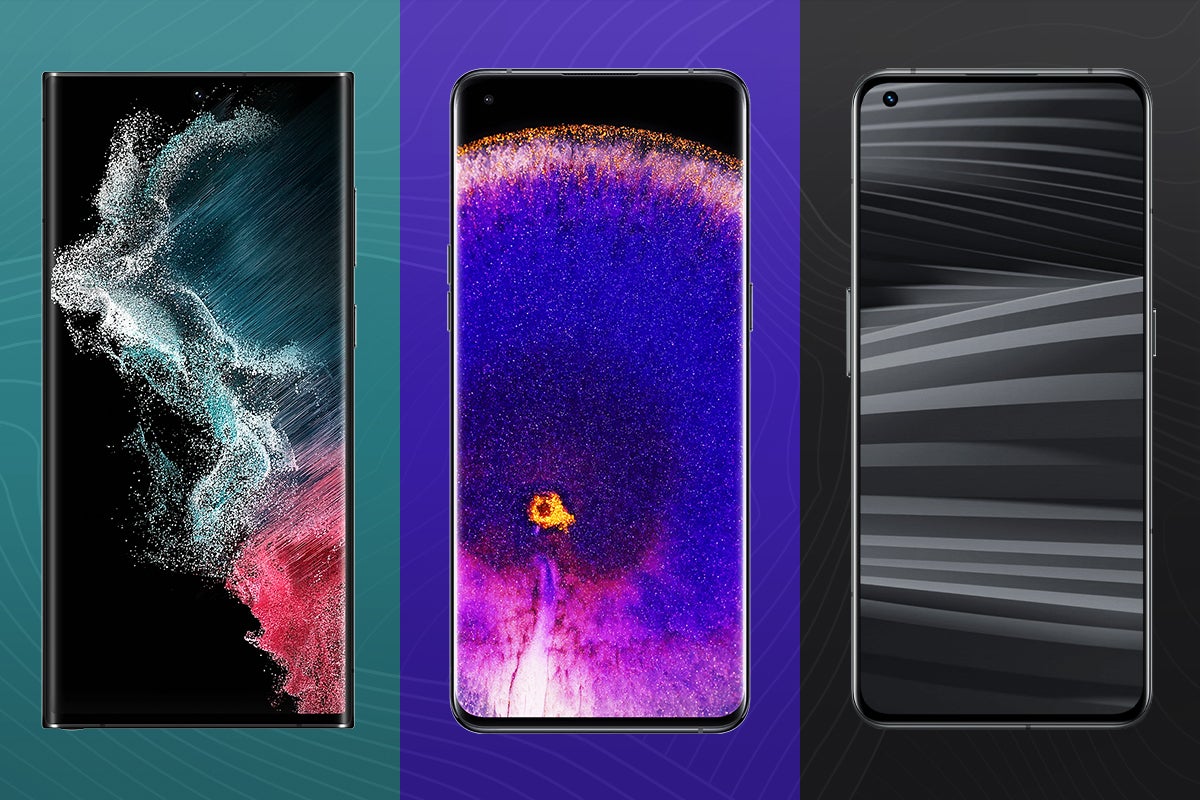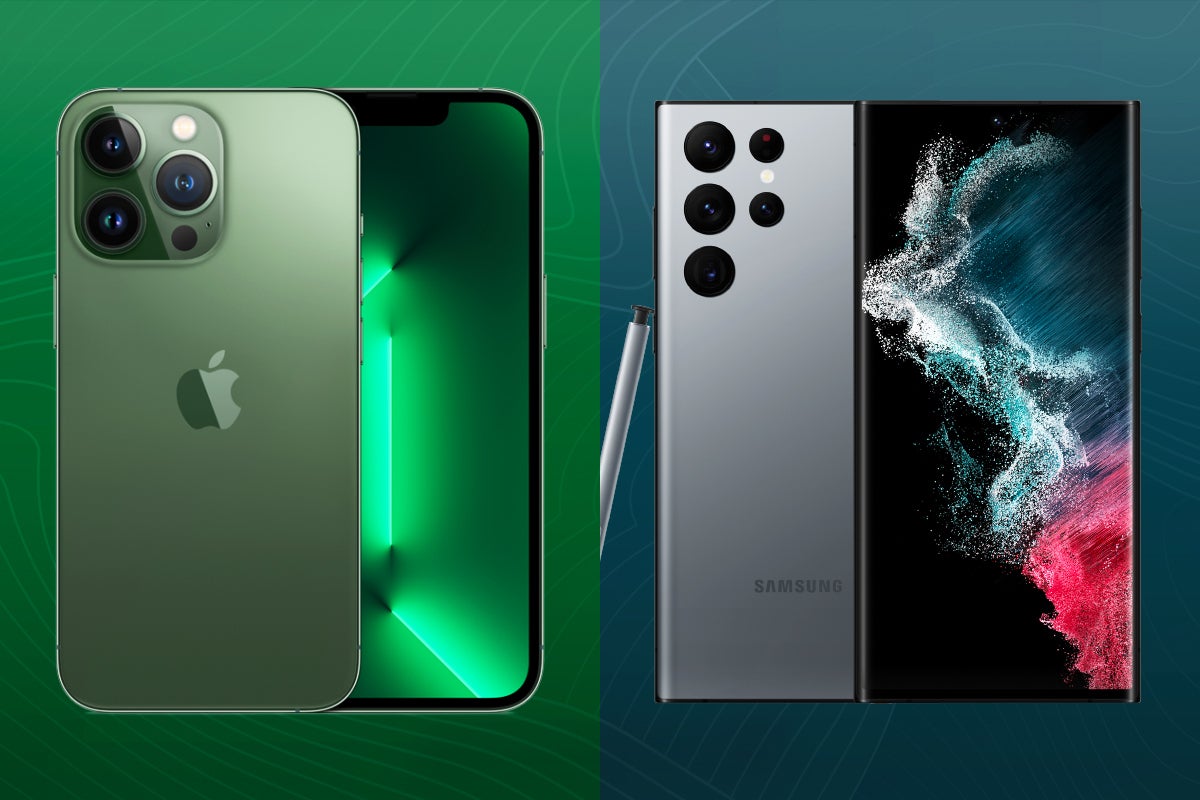Samsung Galaxy S21 FE Review
Worth the wait?
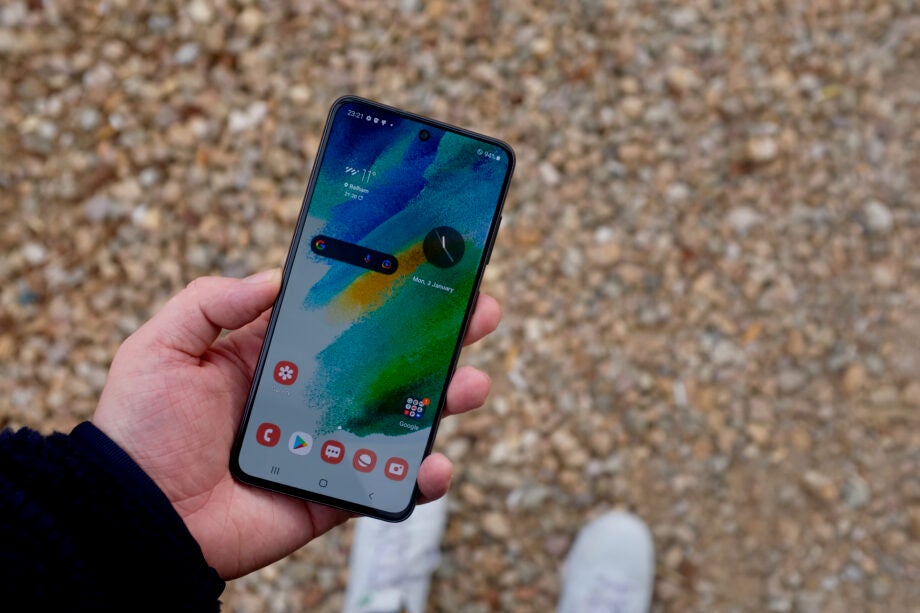

Verdict
The Samsung Galaxy S21 FE ticks multiple boxes, offering good performance and a well-thought-out feature list. It isn’t the most exciting phone I’ve reviewed recently, though, and I can’t help but feel it’s been released a little too late.
Pros
- A very complete package
- Bright, colourful screen
- An IP rating and Qi charging
Cons
- Overpriced compared to the competition
- Camera not as good as Pixel 6
- Average battery life and charging speeds
Availability
- UKRRP: £699
- USARRP: $699
- AustraliaRRP: AU$999
Key Features
- Triple rear cameraThree cameras on the back, including a 12MP wide with OIS
- Great performanceSnapdragon 888 chipset, with 5G and either 6 or 8GB RAM
- Android 12Comes with the latest version of Android and One UI
Introduction
Samsung announced what is likely to be the final member of the Samsung Galaxy S21 family in January following close to a year of leaks about its plans for the FE range.
Due to the sheer number of leaks associated with this particular handset, very few of the features here will be a surprise. However, after spending a few weeks with the Galaxy S21 FE, I can confirm there’s plenty to like – even if it feels like it’s arriving a few months later than it should have.
Design and Screen
- Nice and bright OLED display
- Multiple tasteful colour options
- No headphone jack
Samsung first introduced the ‘FE’ (or Fan Edition) branding a few years ago to signify a pared-down version of one of its flagship devices. I was a huge fan of the Galaxy S20 FE, which was, in many ways, an easier recommendation than the regular S20 as a result of its slightly larger display and superior Snapdragon chipset. Not to mention the cheaper price.
However, the S21 FE is a more difficult sell. For one, Samsung has made the regular Galaxy S21 device cheaper than its predecessor, bringing in some of the more mid-range features from the FE range from the start. These include a plastic body, flat-screen and lower-res display. The S21 has actually felt like it was an FE device right from the start, so it does raise the question of how necessary this release actually is.
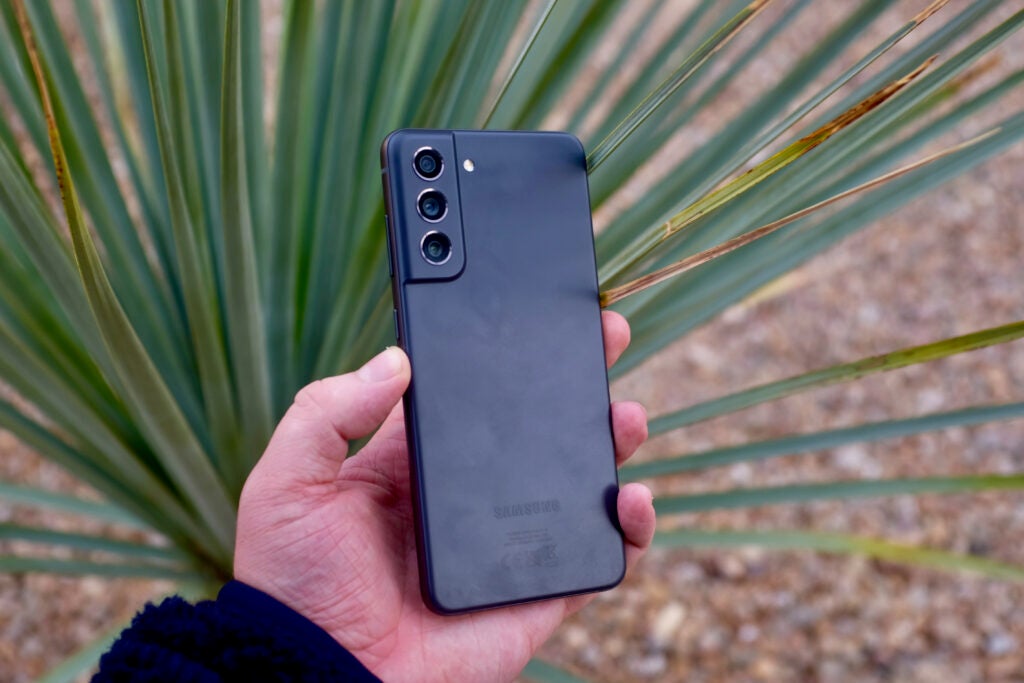
As soon as I took the S21 FE out of its slim box, the handset felt familiar. On the rear sits a camera module that’s very similar to the one on the Galaxy S21’s rear. The body is made from plastic with metal sides, but it still feels tough and is super-light at just 177g. Coming from the iPhone 13 Pro Max, which is only slightly taller, the S21 FE feels extremely comfortable to hold for extended periods.
I’m glad Samsung has seen fit to continue to include an IP68 rating – which remains far from a given in non-flagship devices. The same can be said about Qi charging, which here lets you power up the phone wirelessly at 15W. Wireless charging is super-handy, and such an easy way to charge multiple devices such as earbuds and smartwatches with a single pad.
One of the most obvious differences between this FE version and the standard S21 is the size. The FE’s screen is 6.4 inches, slightly larger than the 6.2 inches of the S21. I like 6.4 inches as a screen size, and it’s a good middle-point between the S21 and the 6.7-inch S21 Plus.
The OLED panel lacks some of the skills of the pricier S21 devices. For example, it has a rigid 120Hz refresh rate, as opposed to an adaptive one that can ramp up (and down), depending on specific tasks. The main benefit of an adaptive refresh rate is that it uses less power for tasks that don’t see a notable benefit from 120Hz, such as flipping through the Kindle book or watching a 30fps YouTube video. Phones such as the OnePlus 9 Pro would slow down the screen for these kinds of tasks to preserve battery life.
To my eyes, at least, this panel isn’t as colourful as the panel on the S21 either. I loaded up a number of photos rich with reds and greens; the representation wasn’t quite as strong as that on the FE. It’s a similar story with HDR Netflix and YouTube – the results are good, but not top-class.
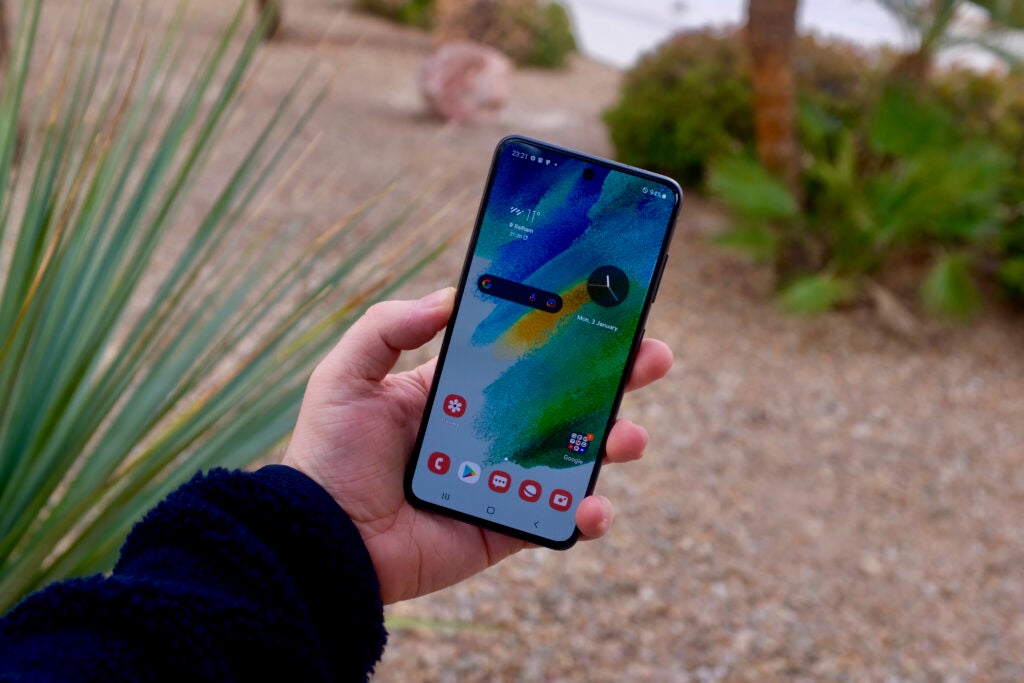
The screen’s 1080p resolution helps it deliver sharp text and images, high levels of brightness and a 240Hz touch response rate for gaming. It’s a flat panel, with a small cutout at the top for the front camera. Unless you want absolute cutting-edge screen tech, this is a good panel.
There’s a fingerprint sensor built into the screen, but it isn’t the ultrasonic version seen in the regular S21 series. Instead, it’s the far more common, and far inferior, optical version found in most Android phones. It’s a fast sensor, although it lacks the accuracy and speed I experienced using other S21 phones.
Camera
- Three cameras on the back
- 32MP selfie camera around the front
- Photos have a saturated look that Samsung fans will appreciate
The Samsung Galaxy S21 FE is priced at £699, which makes it £100 more than the Pixel 6. One of the best things about the Pixel 6 is its imaging skills and, simply put, you should pick that phone if you’re after the best camera phone at this price. If the S21 FE had been released last summer (when all the rumours had suggested) then it would have performed much better against the competition.
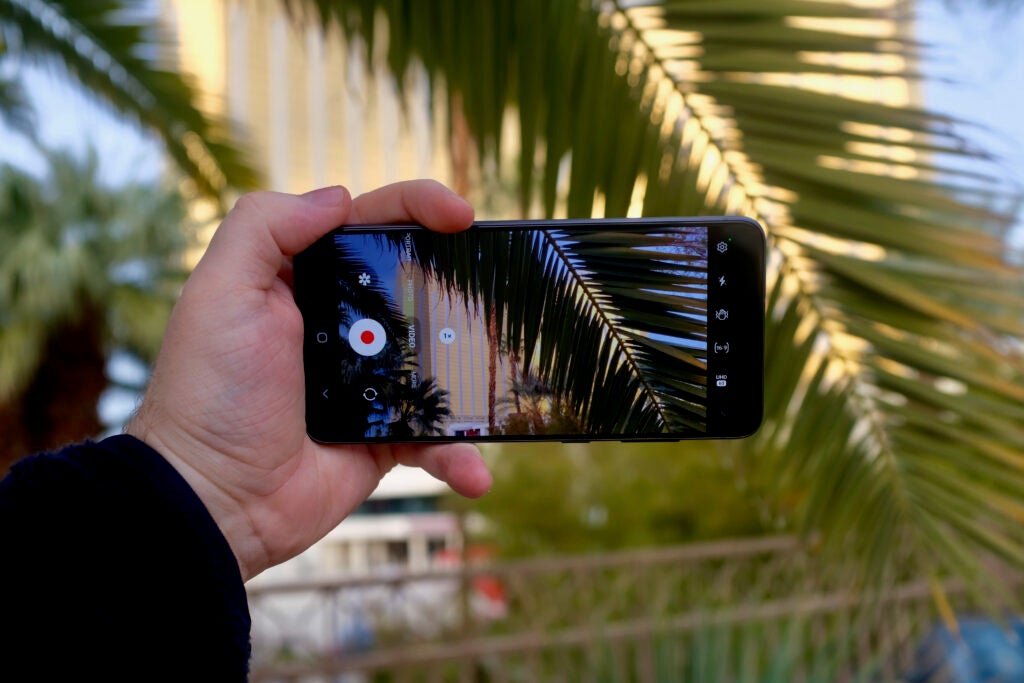
On the back of the Galaxy S21 FE sit three cameras in the usual wide, ultra-wide and telephoto layout. The main camera boasts 12 megapixels, an f/1.8 lens, and optical image stabilisation (OIS). This is the standout sensor, and since it’s pretty much the same unit that features in the regular Galaxy S21, photos are reliable in all manner of conditions.


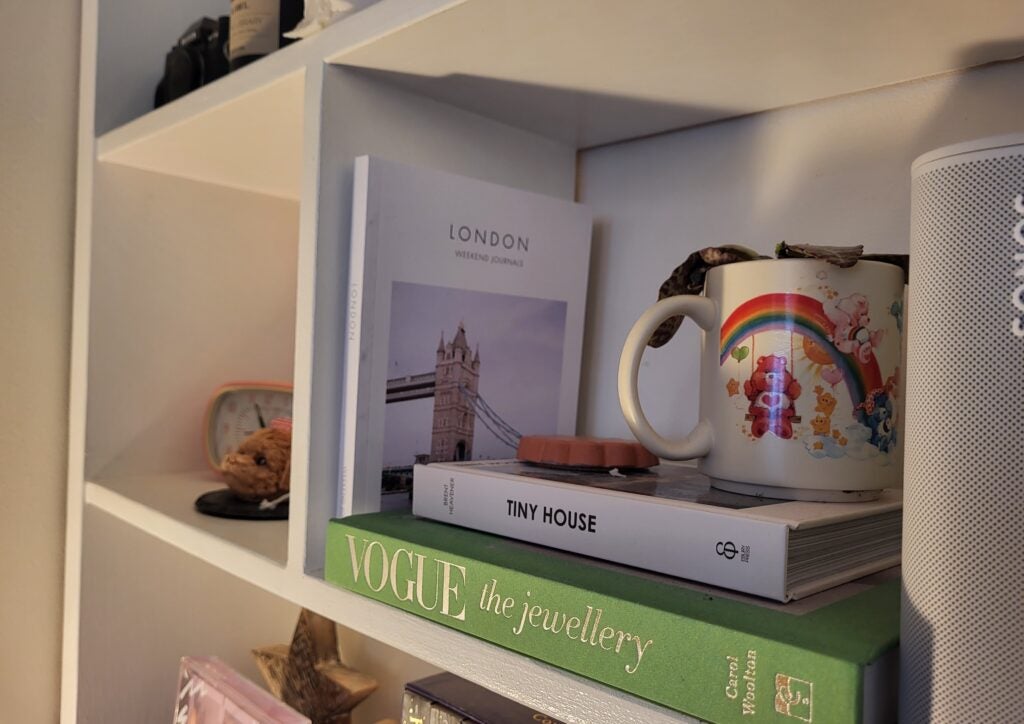
The ultra-wide has a 123-degree field of view, 12-megapixels and an f/2.2 lens. Unlike the Pixel 6, there’s a dedicated 8-megapixel zoom camera here, too, which Samsung says can zoom up to 30x. Take that claim with a pinch of salt, however, since it’s still best kept to a more manageable range. Pictures are fine up to about 3x, after which they become increasingly grainy.
Elsewhere, there’s a 32-megapixel front camera. Selfies are excellent here, as long as you select the ‘Natural’ mode. The other option, ‘Bright’, ramps up the brightness a little too much and adds an odd sheen to everything.
This is very much a typical Samsung camera, whose pictures will be appreciated by those wanting that Samsung Look. By that I mean vivid colours (greens and reds, in particular, are very saturated) and sharp details that can, at times, look a little overprocessed. You’ll notice this when shooting landscapes, where minor details can often stand out too much.
Still, the pictures and video remain pleasing – especially when viewed on the phone’s display, which amps everything up a little bit more.
Performance
- High-end Snapdragon 888 chipset
- Support for 5G
- Android 12 out of the box
In terms of performance, Samsung hasn’t really sacrificed much here compared to its high-end devices. Although when you consider the offerings from Chinese brands such as OnePlus, Oppo, Xiaomi and Realme, I’d expect any £700 phone to be packing top specs these days.
A Snapdragon 888 5G chipset powers the sample I tested. An Exynos model is available in certain regions. It’s great that Samsung is using a ‘flagship’ processor here, but now that the 888 has been superseded by the new Snapdragon 8 Gen 1, I don’t expect it will be long before we begin to see phones with that latter, more efficient chipset included.
The Snapdragon processor is supported by 6GB or 8GB (reviewed) of RAM and 128GB or 256GB storage. There’s no space for a microSD card to expand that storage further, so keep that in mind when choosing your capacity.
As anyone should expect with those specs, the S21 FE is a nippy phone for any task from gaming to productivity. A few years ago, I regularly criticised Samsung for sticking high-end specs in its phone and then seemingly making them slower with buggy software that would often become worse over time. That couldn’t be further from the case now, with the S21 FE feeling smooth in navigation for the most part. Samsung has improved its ability to quickly bring new versions of Android to its phones, too.
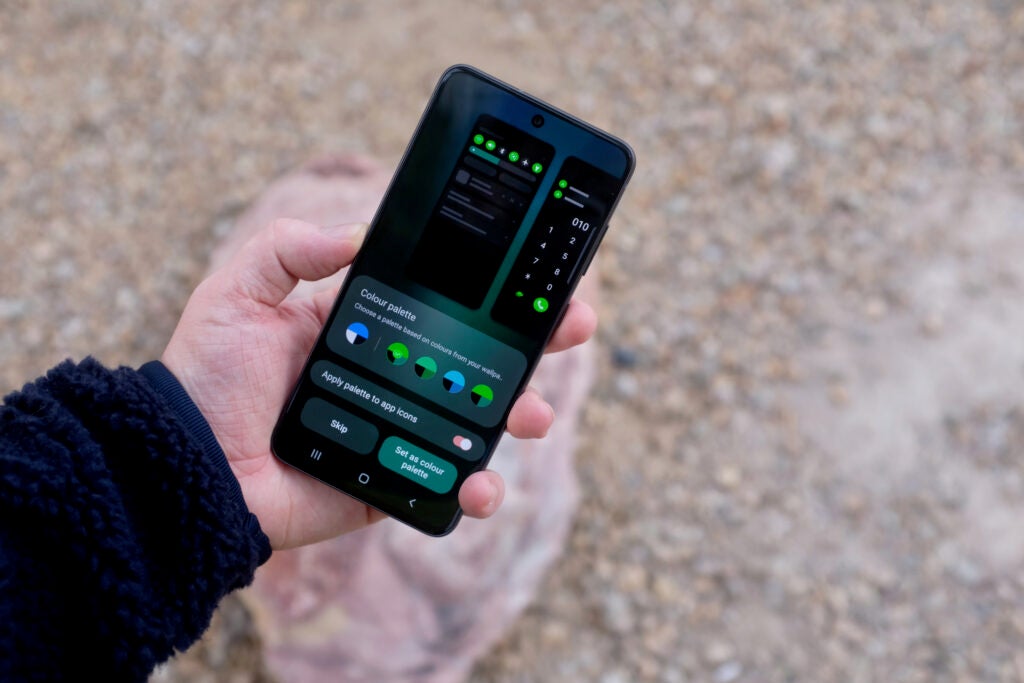
The Galaxy S21 FE is one of the first new phones to ship with Android 12, alongside the latest One UI overlay. While this isn’t a redesign on a par with Android 12 on Pixel phones, some Material You elements have made the jump across. You can inject some colours from wallpapers to customise icons, for example, and there are a couple of new widgets, too.
This is a 5G device, so if you have a 5G-capable SIM, and you’re in an area where the network is supported, you’ll benefit from improved download speeds. There’s WiFi 6 (no 6E, though) for those with a capable router, NFC for Android Pay and call quality is good. I was less impressed with the speakers, though, which were fairly poor – plus it’s far too easy to block them unintentionally when gaming. There’s no headphone port, so you’ll probably want a pair of the best Bluetooth headphones to alleviate this issue.
Battery Life
- No charger included, only a cable in the box
- Support for wireless charging is welcome
Samsung has equipped the Galaxy S21 FE with a 4500mAh battery. That sits bang in the middle of what I’d expect from an Android phone of this size and price. You’ll find some handsets with larger cells and some, like the Galaxy S21, with smaller batteries.
Trying to gauge battery performance purely based on the size of the cell is becoming impossible, since there are so many factors that can impact endurance. I’ve been using the S21 FE for a couple of weeks now, and it has managed to get me through a busy workday of emailing, Slacking and streaming – but only just. I wouldn’t feel confident hammering it all day and then taking it out on the town in the evening with the hope of having some juice left for an Uber.
An adaptive display might have helped stretch out the cell further, but that’s no guarantee. You can always employ one of the battery-saving modes to eke out more life, or manually drop the screen down to 60Hz. Ditching the 120Hz refresh rate resulted in roughly an extra hour of use.
In more measured tests, the S21 FE performs similarly to my real-world tests. An hour of Netflix, for example, consumed 10% of the battery – slightly more than much of the competition, but far from awful. This is very much likely a side-effect of the 120Hz display.
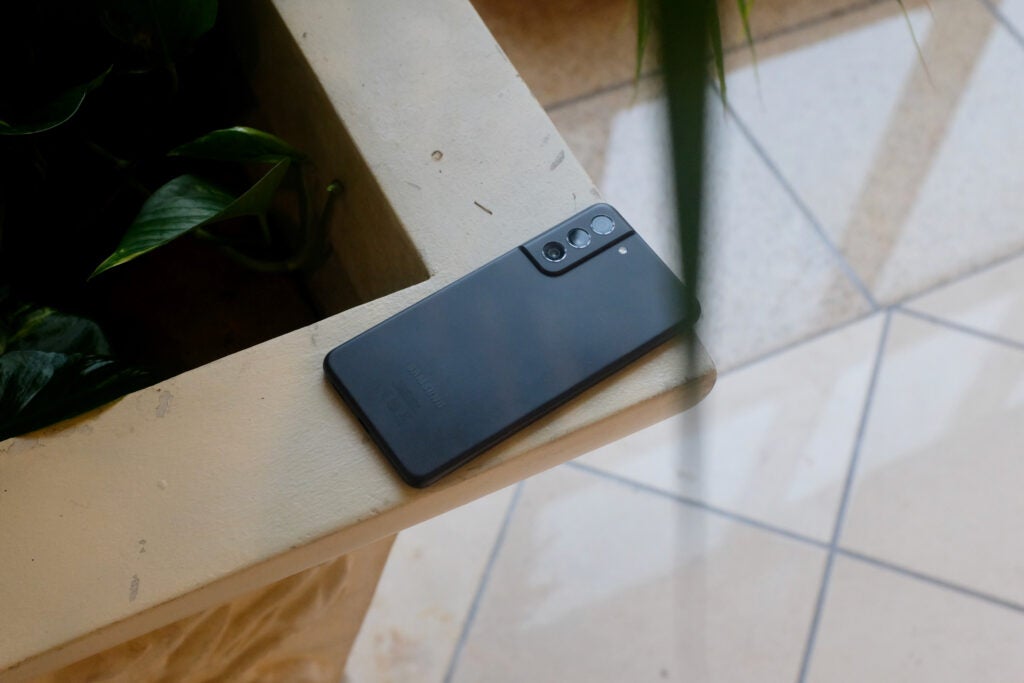
There’s no charger in the box, a move Samsung introduced with the S21 series. You can buy one separately, use one you may have lying around (make sure it’s at least a 25W plug to get the best speeds), or go all-in on wireless.
A full charge with a 25W-capable plug took about 1hr 30mins, which is similar to the iPhone 13 Pro and Pixel 6, but slow compared to some of the fastest Android phones. The OnePlus 9 Pro can go from 0-100% in less than 40 minutes.
Latest deals
Should you buy it?
You want a phone without any glaring feature omission: The S21 FE comes with a good OLED screen, wireless charging, an IP-rated body and three reliable cameras. There’s nothing much missing here.
You’re willing to shop around: As good as the S21 FE is, it isn’t the best at the price. The Pixel 6 is cheaper, with a much better camera and more innovative software, while the regular Galaxy S21 offers a better screen and can be had for a similar price.
Final Thoughts
The Samsung Galaxy S21 FE is a little too pricey when you consider what the Pixel 6 offers for less, but this is a device that will get the job done for a lot of people. It has a nice screen, speedy specs and a trio of cameras that will appeal to those who have shot with Samsung phones for years. Ticking all these boxes means it’s a phone I can happily recommend.
The biggest issue I have is the price – not only when compared to the best Android phones, but next to Samsung’s other phones, too. A quick search shows that the standard S21 can be had for less than £699 – and, between the two, I’d go for the S21 over the FE due to its better screen and superior zoom camera. For a similar price, you could pick up the OnePlus 9 Pro or the Xiaomi Mi 11.
Then there’s the upcoming launch of the Galaxy S22 to consider – it’s worth waiting to see what the base model in that lineup offers before taking the plunge here.
How we test
We test every mobile phone we review thoroughly. We use industry standard tests to compare features properly and we use the phone as our main device over the review period. We’ll always tell you what we find and we never, ever, accept money to review a product.
Used as our main handset during test period
Camera tested in variety of situations with all modes
Tested with synthetic benchmarks and real world use
FAQs
There is no expandable storage, just like the other S22 models
The S21 has an adaptive refresh rate, a feature missing here
Yes, the UK version runs on the Snapdragon 888 chipset
Trusted Reviews test data
We run every phone we review through a number of tests. Here are the results we lifted during the review process.

